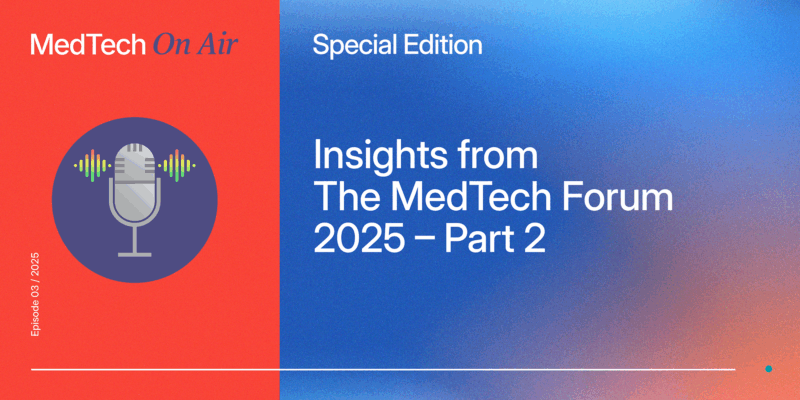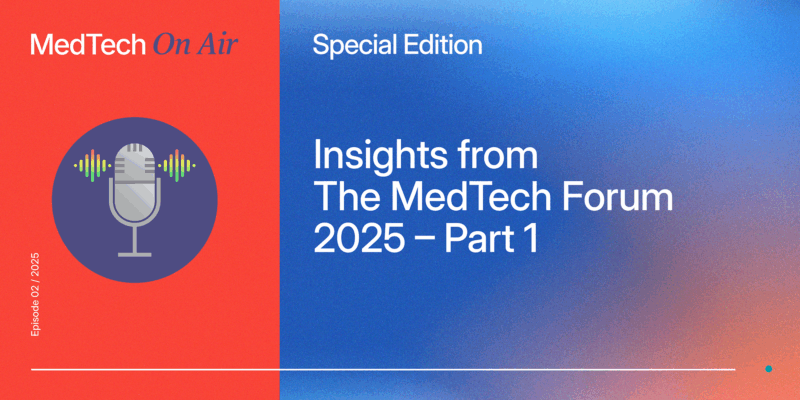
Patient engagement is no longer optional. And it doesn’t have to be overwhelming

You’ve built a device that clinically works. You’re proud of the science, the technology, the potential. And you’ve done it in one of the toughest sectors, where innovation must clear not just technical hurdles, but regulatory, clinical, and commercial ones too.
But here’s what’s changing: clinical performance alone is no longer enough.
Payers, policymakers, and regulators are all shifting toward value-based, patient-centered health systems. That means your innovation, whether it’s a device, a diagnostic, a platform, or an AI-powered solution, will increasingly be assessed not just for what it can do, but for whether it delivers what patients actually need.
So here’s the question: are you ready to prove that?
Why patient engagement matters for medtech
You may be developing technologies that don’t directly interface with patients, but that doesn’t make patient engagement irrelevant. In fact, as expectations evolve, it’s becoming essential.
Especially with the rollout of the EU Health Technology Assessment Regulation (HTAR), the pressure to involve patients early, credibly, and consistently is rising fast. It’s no longer just about listening, it’s about showing how patient perspectives have shaped development decisions and how they translate into measurable value.
Procurement and assessment processes are moving toward more transparent, multi-stakeholder frameworks. Patient experience data is gaining traction as a critical input into HTA, and efforts are underway to define how it can be integrated into evidence-generation and value demonstration.
A recent global review found that nearly one-third of all regulatory and HTA references to patient engagement and patient experience data emerged in just the past year—up from virtually none the year before. This sharp rise reflects more than growing recognition; it marks a shift toward embedding these practices into formal decision-making pathways. In a world that’s increasingly complex and constrained, patient experience, shaped and understood in partnership with patients, has become a guiding light for decisions across life sciences and health systems.
Those who can’t demonstrate how they’ve involved patients, and how they’ve incorporated their experience as evidence, risk losing time, traction, market access, and ultimately, both trust and long-term success.
A shared challenge. A growing community
That’s the question many medtech leaders are quietly asking: Where do we begin?
Fortunately, patient engagement is no longer an abstract ideal. It’s a growing field with shared learnings, evolving practices, and an active community working to build clarity and confidence, across sectors, regions, and roles.
Over the past decade, collaborative spaces have emerged that bring together patients, regulators, health technology assessors, developers, and other system actors to co-create solutions and define shared standards. These are not one-off events, but year-round working forums that invite participation from across the ecosystem.
And for those who want to follow the discussion more closely, new opportunities are emerging to stay informed and engaged, wherever you are. Across the patient engagement community, important conversations are unfolding around how AI is shaping healthcare decisions and the need to involve patients in defining its ethical use. There is a growing focus on how health systems assess value, particularly for personalized and digital technologies, and how patient-defined outcomes can inform those decisions.
Discussions are also exploring what meaningful involvement looks like in the context of the EU’s new Health Technology Assessment Regulation (HTAR), including the real-world challenges of implementation, transparency, and shared accountability. As digital health tools rapidly evolve, communities are also addressing how to embed patient insight into design, usability, and data governance in ways that are both feasible and impactful.
Looking ahead: Patient engagement as the way forward
These are challenging times for health innovation. As Juan García Burgos, Head of Public and Stakeholder Engagement at the European Medicines Agency recently put it:
“Patient engagement must be embedded across all aspects of study design, not just as part of Patient Experience Data.”
Expectations are rising, and so is the pressure to demonstrate real impact. In today’s environment, relevance isn’t assumed. It must be earned.
Patient engagement offers a clear way forward, one that is right for science, right for systems, and increasingly, right for business. It aligns innovation with real-world needs, strengthens evidence, reduces risk, and improves outcomes. And importantly, it builds the trust, usability, and credibility needed to scale and sustain new technologies.
That’s why investors and funders are paying attention. There’s growing interest in patient engagement not only as a social or regulatory obligation, but as a strategy for better-informed investments, stronger data, portfolio de-risking and more sustainable success.
This is no longer a niche discussion, it’s a signal of where health innovation is headed. Because this isn’t a moment, it’s a model. And it’s one that systems, investors, and patients alike are beginning to embrace in the current climate.









